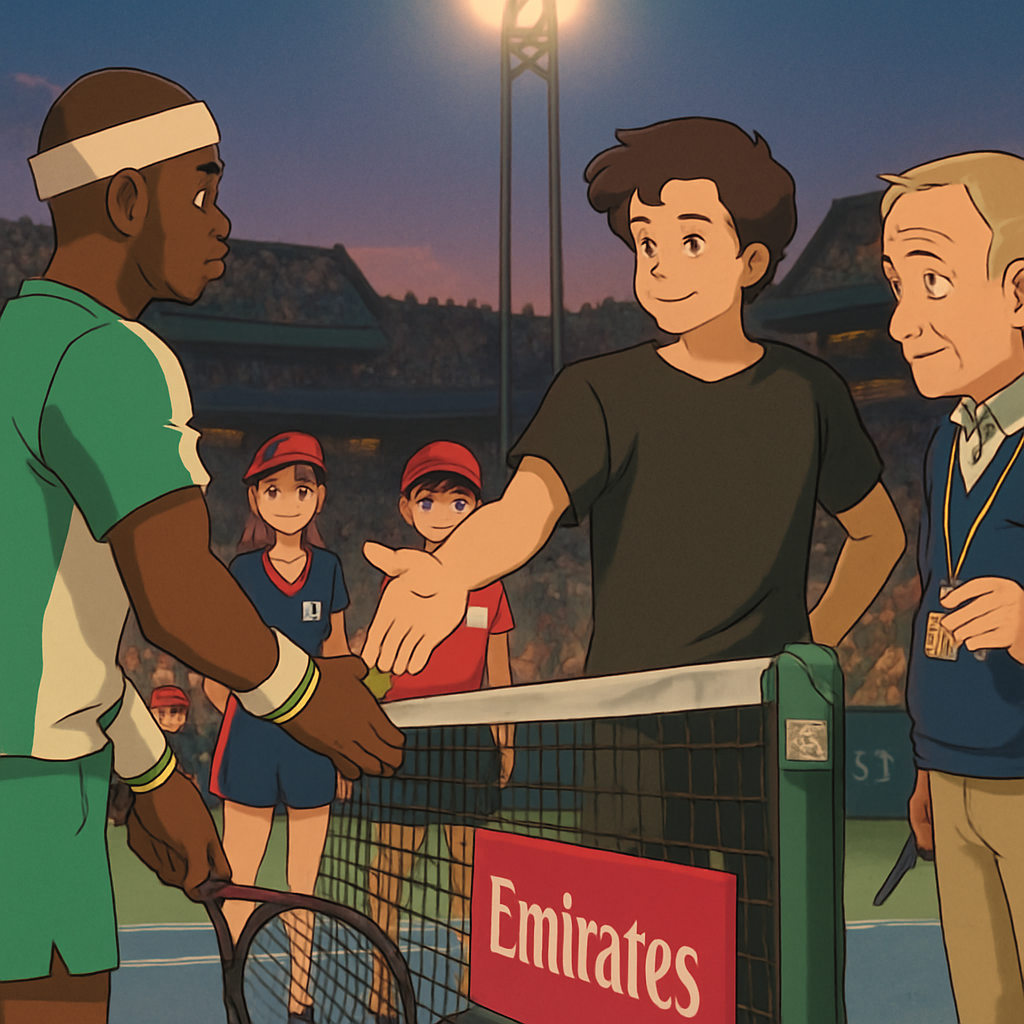TORONTO — Canadian tennis star Milos Raonic made headlines at the 2023 National Bank Canadian Open after a heated dispute with officials over a controversial line call during his second-round match against American Frances Tiafoe. The incident, which occurred late in the third set, led to Raonic accusing tournament supervisors of "lying" about the decision to halt play.
The controversy erupted at 4-4 in the final set, with Raonic serving at deuce. A shot from Tiafoe was initially called out by the line judge, but the chair umpire overruled the call, awarding the point to Tiafoe. Raonic immediately protested, arguing the ball was clearly wide. Tournament supervisor Tony Cho was called to the court, but after reviewing the available camera angles, officials upheld the decision.
The Disputed Call and Immediate Fallout
Raonic, known for his composed demeanor, became visibly frustrated when play was stopped for nearly 10 minutes while officials deliberated. The 2013 Canadian Open finalist told reporters afterward, "They didn't have the right angle to overturn it. The supervisor came out and said they saw it clearly, but that's not true. They're lying."
Key moments in the dispute:
- The original out call came from the far sideline judge
- Hawk-Eye technology wasn't available on that particular court
- Broadcast replays appeared to show the ball landing out by approximately 2cm
- Officials cited "inconclusive evidence" for upholding the overrule
Match Dynamics Shift After Controversy
The decision proved pivotal, as Tiafoe broke serve in the next point and went on to win the match 6-7(12), 7-6(4), 7-5. Raonic's service speed, which had been consistently above 135 mph throughout the match, dropped noticeably in the final games. "I lost focus after that," Raonic admitted in his post-match press conference. "When you feel like the integrity of the match is compromised, it's difficult to regroup."
Officials' Response
ATP supervisor Ali Nili defended the decision in a statement to media: "While we understand Milos' frustration, our officials made the call based on the information available to them in real-time. Without electronic review on that court, we must rely on the chair umpire's judgment. We stand by our team's professionalism throughout this incident."
The incident reignited debate about technology disparities in tennis tournaments. While center court at Sobeys Stadium features full Hawk-Eye Live (automated line calling), outer courts still use human line judges. This marked the third controversial call of the tournament's first three days, prompting calls from players for uniform technology implementation across all courts.
Player and Fan Reactions
Tiafoe, while celebrating his victory, acknowledged the contentious moment: "Tough situation for everyone. Milos is a great competitor and I know how much this tournament means to him. I thought the ball caught the line, but I get why he's upset. These things happen in tennis - sometimes you get the calls, sometimes you don't."
Canadian tennis fans expressed outrage on social media, with #RaonicRobbed trending nationally on Twitter. Many pointed to broadcast replays showing the ball clearly out. Former Canadian pro Daniel Nestor tweeted: "When will tournaments invest equally in all courts? This is unacceptable at a Masters 1000 event. Cost can't be the excuse anymore."
Historical Context of Officiating Controversies
This isn't the first high-profile officiating dispute in Canadian Open history:
- 2019: Denis Shapovalov had a crucial overrule go against him vs. Rafael Nadal
- 2014: Venus Williams successfully appealed a foot fault call that would have ended her match
- 2006: A similar "no technology" controversy occurred in a Lleyton Hewitt match
Raonic's outburst marks a rare display of emotion from the typically reserved Canadian. As he noted in his press conference: "I've been on tour 15 years and never accused anyone of lying before. But when you see the replay clearly shows one thing and they say they saw something else... what else can you conclude? This is our livelihood. These calls matter. The technology exists - there's no reason every court shouldn't have it at this level."
The ATP has not indicated whether they will review the incident or consider implementing uniform technology standards. For Raonic, playing in what may be his final Canadian Open due to persistent injury concerns, the controversy added another layer of disappointment to an otherwise strong showing in front of his home fans.

